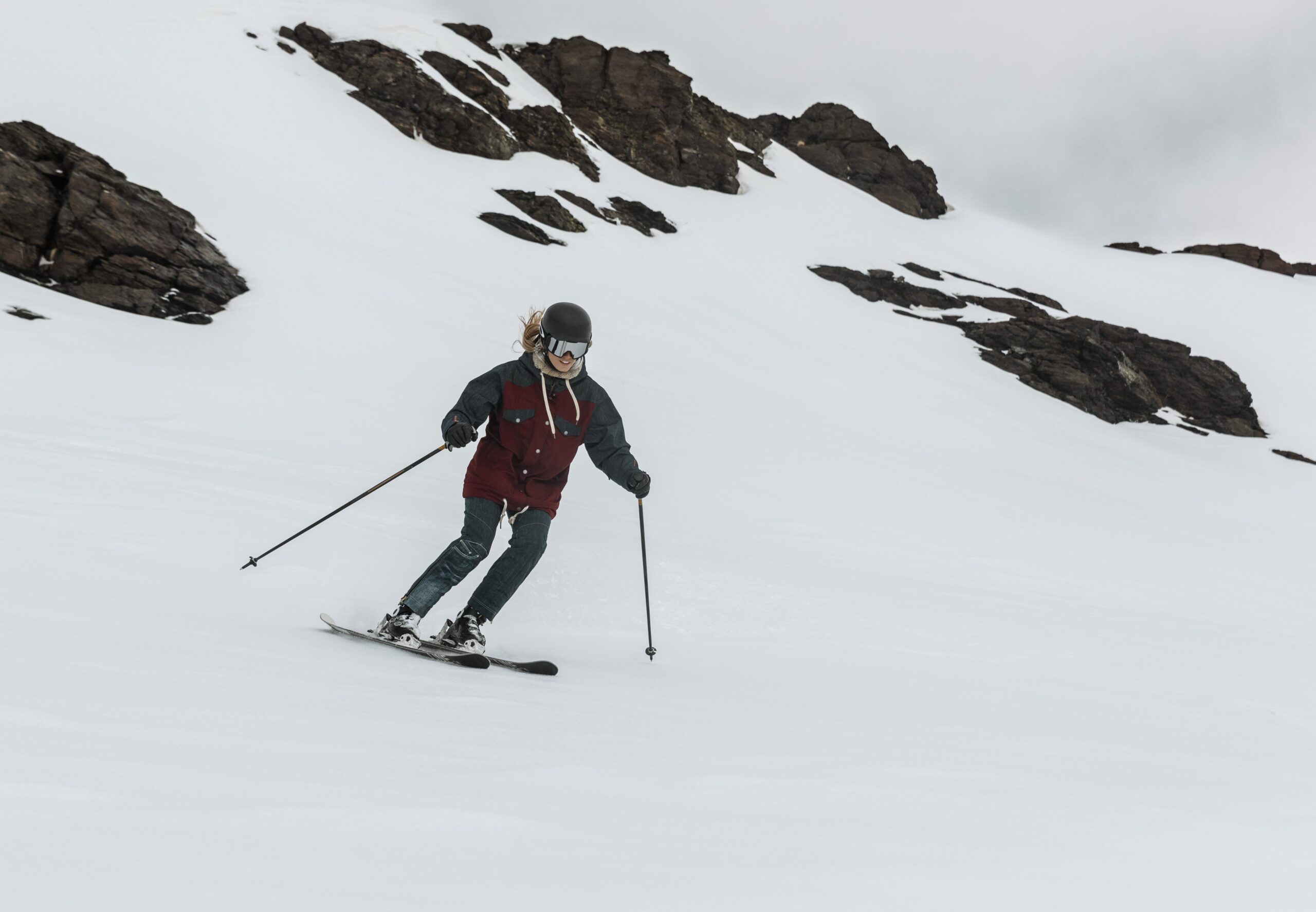First-Time Skiing: What Should You Wear?
Are you a newbie on the slopes? Skiing for the first time can be exciting and overwhelming — and knowing what to bring when skiing for the first time is essential. This sport requires specialized equipment to keep you safe, protected, and ready to enjoy.
At Norm’s Ski & Bike Shop, we’ve created this beginner-friendly guide to help you prepare for your first adventure. As your trusted ski shop in Keene NH, we bring years of expertise in the snow sports industry to ensure you have everything you need for your first ski trip.
Essential Skiing Checklist for Beginners
Must-have ski attire
✔️ Thermal base layers
✔️ Waterproof jacket and pants
✔️ Insulated gloves
✔️ Warm hat or helmet liner
✔️ Ski socks (not just any socks!)
Ski gear essentials
✔️ Skis and poles
✔️ Ski boots
✔️ Helmet (non-negotiable!)
✔️ Ski goggles
Additional items to pack
✔️ Sunscreen and lip balm
✔️ Snacks and water bottle
✔️ First aid kit
✔️ Hand warmers
Expert Tips: What to Look for In Ski Equipment?
Now that you have your checklist, let’s go over what to consider when choosing each item.
Thermal Base Layers
- What to look for:
- Choose moisture-wicking fabrics like merino wool, synthetic blends, or silk to stay dry and maintain warmth.
- Look for snug-fitting base layers that allow a full range of motion without feeling restrictive.
- Select the appropriate weight based on weather conditions: light for milder temperatures, medium for typical winter days, or heavy for icy conditions.
- Choose breathable fabrics that release moisture to prevent sweating, which can lead to cold and discomfort.
- Our recommendation:
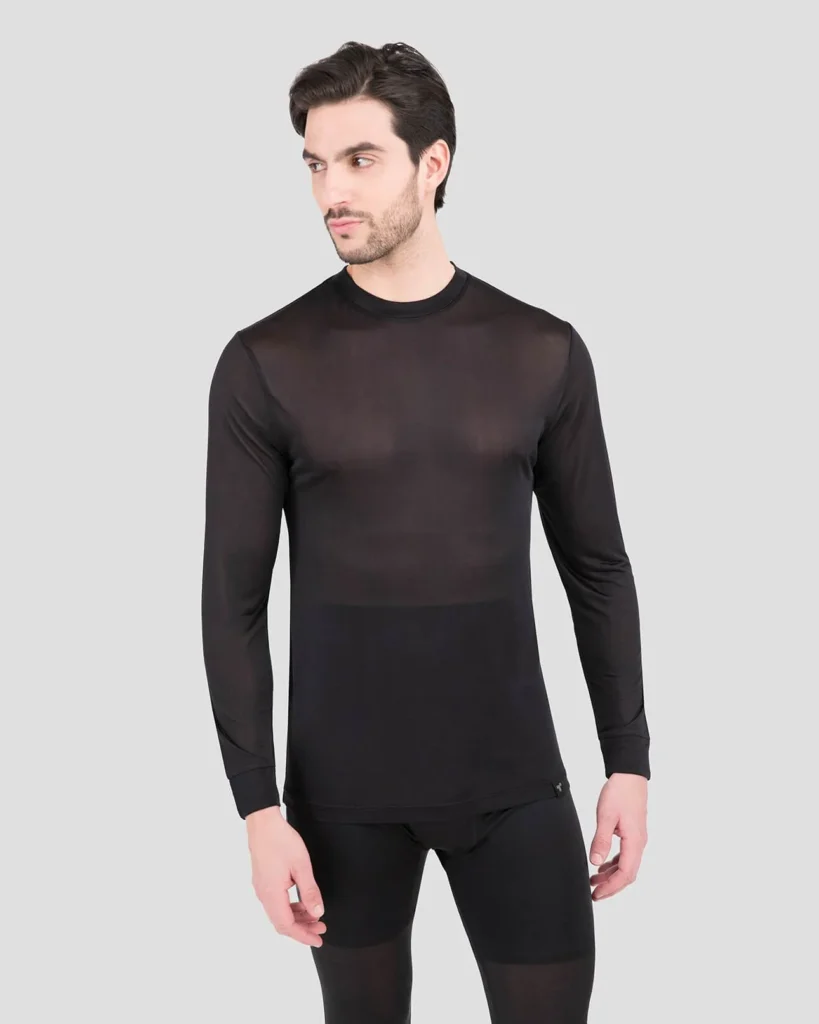
The proper layers are essential for warmth and comfort on the slopes. Terramar’s Thermasilk 1.0 is a lightweight base layer that manages moisture to keep you dry and warm on milder days. For colder conditions, layer up with Thermolator 2.0 (men) or Cloud Nine 2.0 (women) for added warmth and insulation. We also carry other brands and have options available for kids to keep the whole family comfortable on the slopes.
Waterproof Jacket and Pants
- What to look for:
- Choose jackets and pants from high-quality, water-resistant fabrics to keep you dry in changing snow conditions.
- Look for fully sealed seams to prevent moisture from seeping in and compromising warmth.
- Features like pit zips or core vents help regulate body temperature and provide breathability during active skiing.
- Depending on your needs, select a jacket and pants with the right amount of insulation for your local weather conditions.
- Our recommendation:
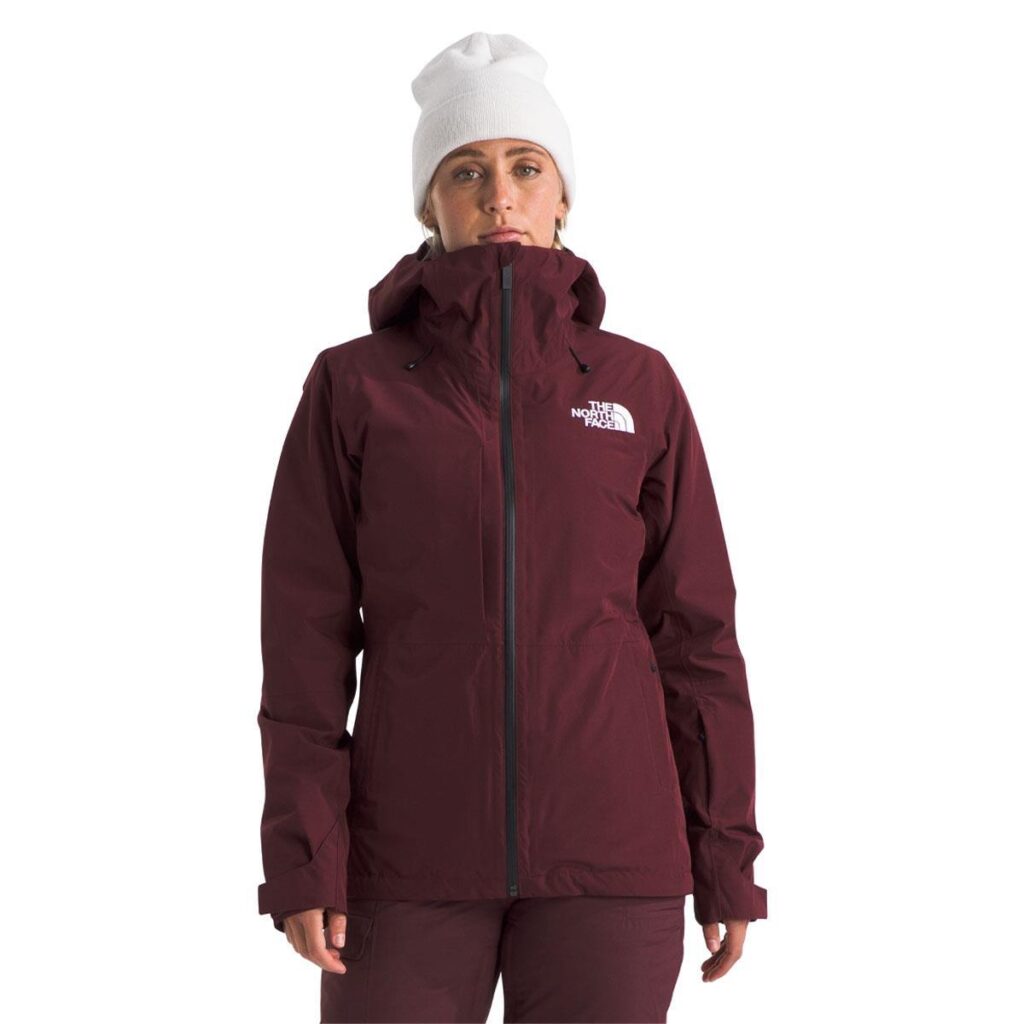
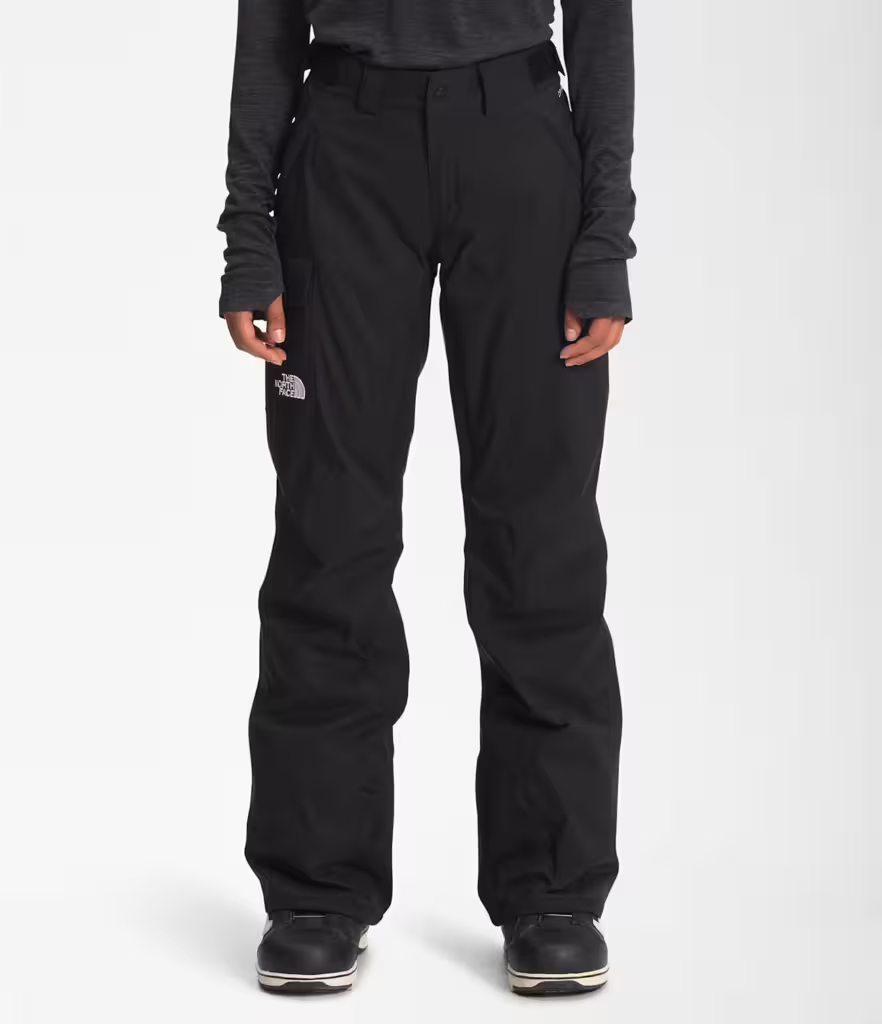
Our top recommendation for staying warm and dry is The North Face ThermoBall Eco-Snow Triclimate Jacket paired with the Freedom Insulated Pant. These versatile options offer the perfect balance of warmth, waterproof protection, and style for any skiing adventure. They’re designed to keep you comfortable and prepared for changing weather conditions on the slopes.
Insulated Gloves
- What to look for:
- Choose gloves with adequate insulation to ensure your hands stay warm in freezing temperatures throughout your ski day.
- Opt for water-resistant or waterproof materials to prevent snow and moisture from soaking through and compromising warmth.
- Insulated gloves should provide warmth without sacrificing flexibility, allowing you to maintain movement and handle gear with ease.
- Look for wrist closures or adjustable cuffs to seal out cold air and snow.
- Gloves that allow moisture to escape will help prevent sweat buildup, ensuring all-day comfort.
- Our recommendation:
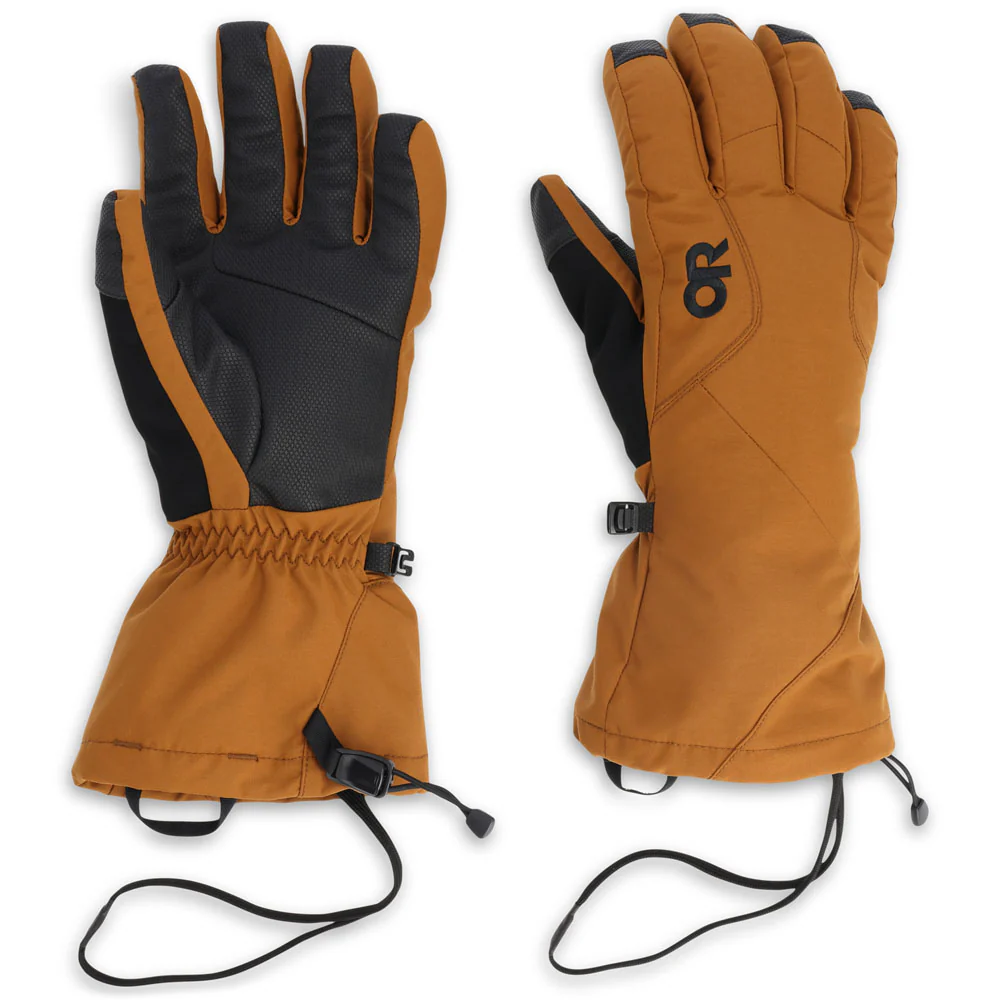
Outdoor Research Adrenaline 3-in-1 Gloves combine durability, warmth, and functionality. Featuring waterproof Ventia inserts and EnduraLoft insulation, they keep your hands dry and warm in cold conditions. The touch-screen compatible fleece liner adds convenience, while pinchable gauntlets and a removable leash ensure a secure, snow-proof fit. A smart, versatile choice for your ski adventures!
Snow Socks
- What to look for:
- Look for merino wool or synthetic blends for moisture-wicking and warmth.
- Full or targeted cushioning helps prevent blisters and provides added comfort.
- Opt for snug, over-the-calf designs to stay in place and protect against the cold.
- Socks with excellent ventilation prevent overheating during long ski sessions.
- Our recommendation:
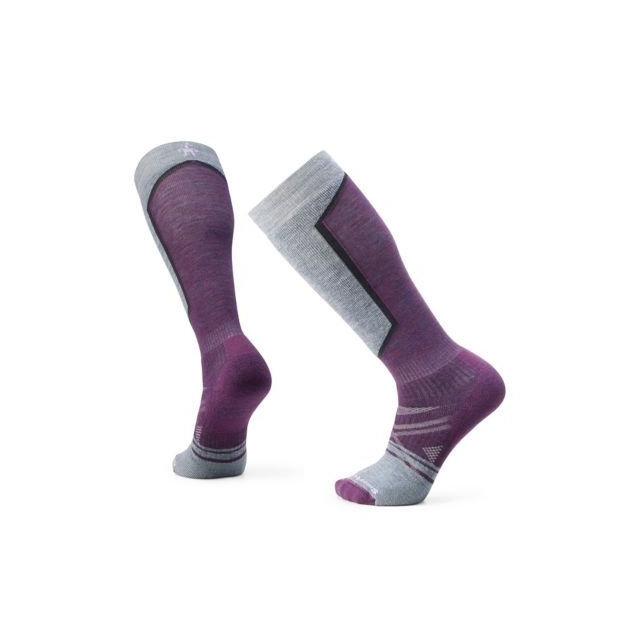
The Smartwool Ski Full Cushion Over-The-Calf Socks are a top choice for comfort and performance. Made with merino wool, they offer superior warmth, moisture management, and cushioning. Their over-the-calf fit ensures they stay secure, making them ideal companions for a day on the slopes.
Ski Boots
- What to look for:
- A snug yet comfortable fit is crucial to prevent foot pain and maintain slope control.
- Choose a medium flex (90-110) for balanced performance and comfort, ideal for beginners to intermediates.
- Look for boots with insulated liners to warm your feet during long ski sessions.
- Features like micro-adjustable buckles ensure a personalized and secure fit.
- Our recommendation:
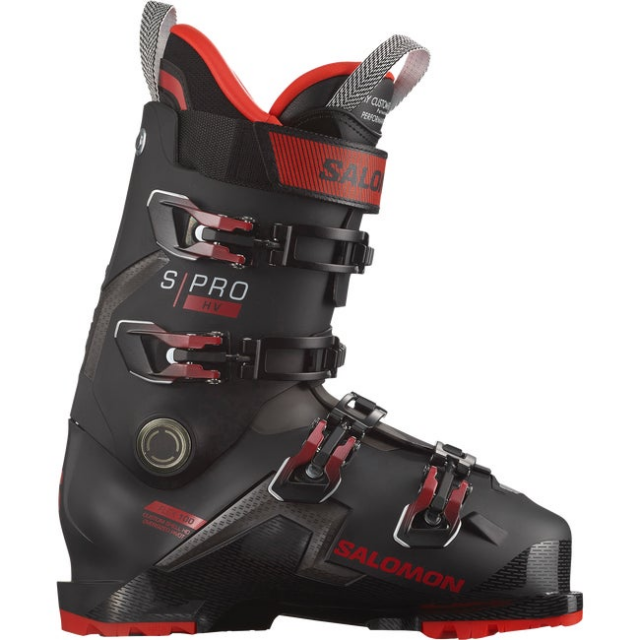
The Salomon Men’s S/Pro HV 100 offers exceptional comfort and performance. It is designed for skiers seeking an easy-to-adjust fit with a wider volume. Its insulated liner and customizable features make it perfect for all-day skiing.
Skis and Poles
- What to look for:
- Select skis and poles designed for beginners if you’re starting or advanced options for seasoned skiers.
- A softer flex is more manageable for beginners, while experienced skiers may prefer stiffer skis for greater precision.
- Ensure poles are the correct height for your size to maintain proper posture and balance.
- High-quality materials ensure your gear lasts through multiple ski seasons.
- Our recommendation:
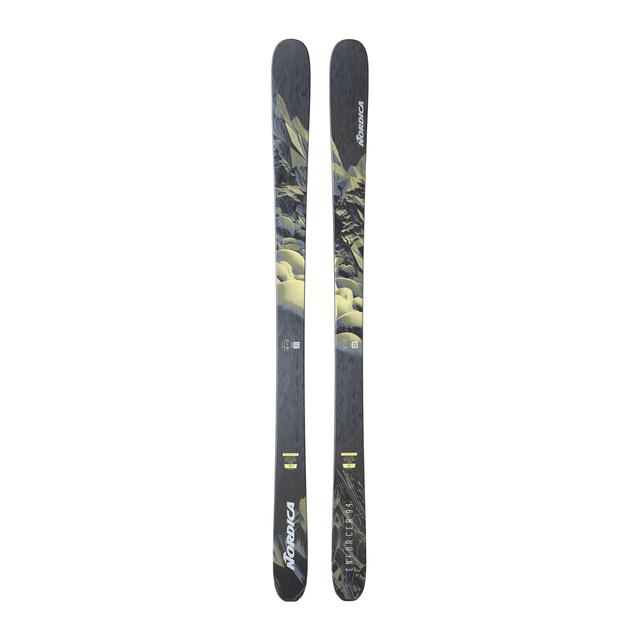
The Nordica Enforcer 94 is a standout all-mountain ski designed for versatility and control. Featuring a wood core reinforced with titanal layers and an elastomer Pulse core, it delivers smooth, stable rides and precise turns. Pair them with adjustable poles to customize your setup, and keep an eye out; we sometimes have snow skis for sale.
Helmet
- What to look for:
- A secure, snug fit is crucial for slope safety and comfort. Look for adjustable systems to fine-tune the fit.
- Helmets with practical ventilation help regulate temperature during physical activity.
- Choose a helmet with a sturdy outer shell to withstand impacts and protect your head.
- Ensure the helmet pairs seamlessly with your ski goggles for a better experience.
- Our recommendation:
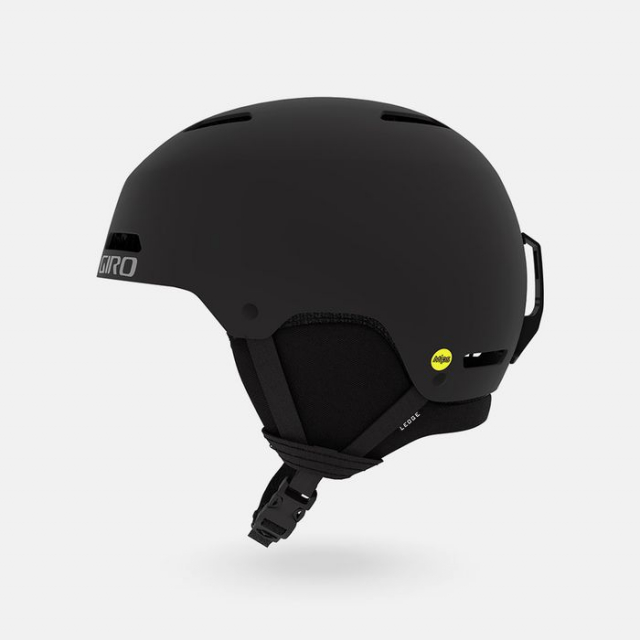
The Giro Ledge MIPS helmet combines a sleek design, advanced safety features like MIPS, and a durable hard-shell construction. Adjustable fit systems and optimal ventilation make it a reliable choice for comfort and slope protection.
Ski Goggles
- What to look for:
- Opt for goggles with anti-fog coatings and UV protection for clear visibility and eye safety.
- Choose goggles that fit comfortably on your face and pair well with your helmet.
- Proper ventilation prevents fogging during intense skiing sessions.
- It is ideal for adjusting to different lighting conditions.
- Our recommendation:
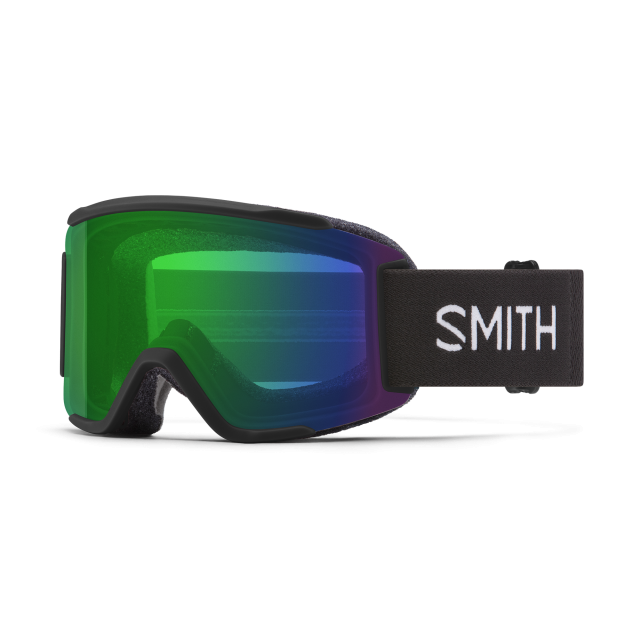
The Smith Optics Squad S goggles feature high-quality lenses with excellent anti-fog and UV protection, a comfortable fit, and ventilation, making them a dependable choice for all-day skiing.
Bonus: Extra tips for first-time skiers
Step-by-step guide to dressing for skiing
Dressing properly is vital for staying warm, dry, and comfortable on the slopes. The right layers will ensure you maintain warmth without overheating while allowing freedom of movement. Here’s how to build your outfit step-by-step:
1. First base layer
2. Insulation ski bib pants and jacket
3. Neck warmer
4. The top coat: Insulated jacket
5. And you are ready to go!
Whether starting with downhill trails or exploring beginner-friendly paths, you must have all the proper gear. If you plan on branching out into different types of skiing, familiarize yourself with cross-country skiing equipment. This type of gear is designed for more aerobic activities on flatter terrain and requires its own specific set of essentials.
Consider Taking a Ski Lesson
Starting your skiing journey with a professional lesson is one of the best ways to build confidence and learn the basics safely. Ski instructors can teach you proper technique, ensure you’re comfortable with your gear, and help you understand how to navigate the slopes. They can also help you figure out what to wear for skiing the first time, ensuring that you stay warm, protected, and ready for your first adventure.
Understand the Trail Ratings
Understanding ski trail ratings is essential for first-time skiers. These ratings indicate the difficulty level of each trail and ensure you stay safe on the slopes by selecting paths that match your skill level.
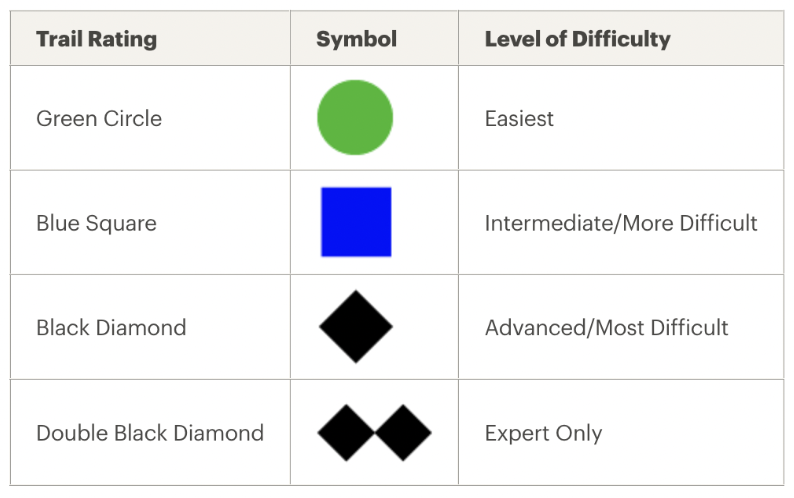
Planning Your Ski Day
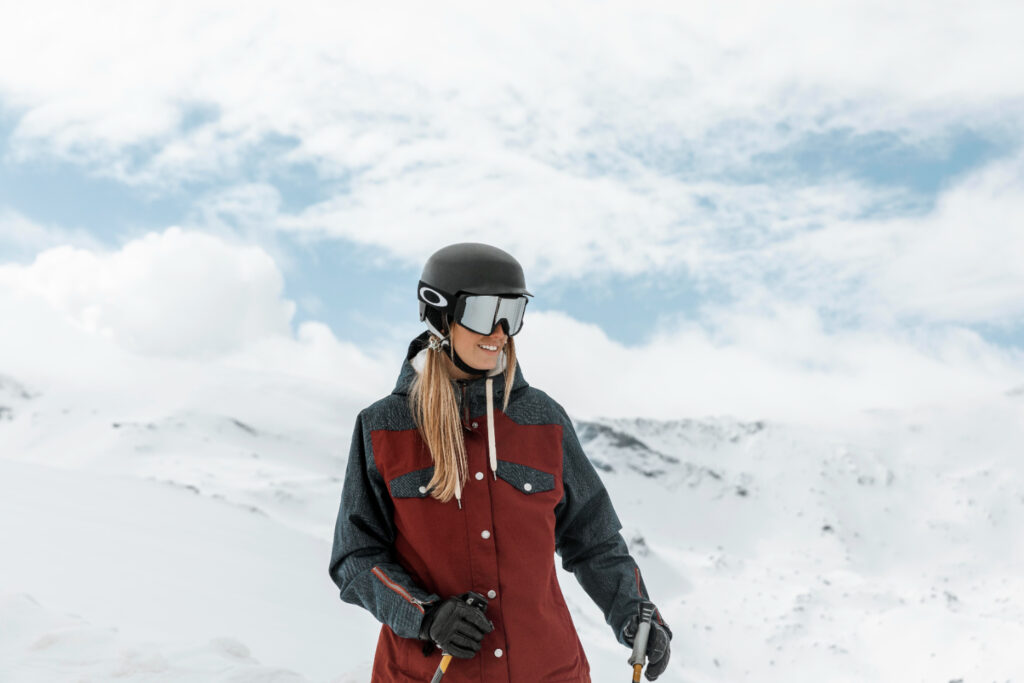
Check the Weather Forecast
Before heading out, always check the weather forecast. Conditions can change quickly in the mountains, and knowing what to expect will help you dress appropriately and prepare for varying visibility or snow conditions.
Arrive Early
Getting to the slopes early gives you time to get familiar with your gear, secure parking, and beat the crowds. Arriving early also allows you to maximize your ski day by optimizing the number of runs you can complete.
Reserve Lift Tickets in Advance
Lift lines can be long, especially during peak weekends or holidays. Booking your lift tickets in advance ensures you spend less time waiting and more time on the slopes.
Plan Your Routes
Take a few minutes to study the trail map and identify the green, blue, and black runs that align with your skill level. Having a general plan for your runs will help you navigate the slopes quickly and reduce the risk of getting lost.
Set Realistic Goals & Take Breaks
Remember that skiing can be physically demanding, so listen to your body, pace yourself, and take breaks to rest, refuel, and stay energized.
Look Like a Pro with the Ultimate Ski Gear!
Gear up with the best equipment to hit the slopes! Visit Norm’s Ski & Bike Shop, your go-to ski shop in Brattleboro, VT, for all your skiing essentials.
FAQs
Do you actually need a ski jacket?
A ski jacket is essential as it provides warmth, and protection from snow and is typically waterproof. It keeps you comfortable and dry on the slopes.
Should I take a backpack when skiing?
Carrying a small, lightweight backpack can be useful for storing essentials like water, snacks, sunscreen, and extra gloves before you hit the slopes. Keep it minimal to maintain comfort and ease of movement throughout the day.
What shoes are required for skiing?
Ski boots are a must for anyone skiing. They are specifically designed to connect to your skis and provide the necessary support. Regular shoes won’t provide the same safety or functionality.
Can you ski in regular clothes?
No, regular clothes lack the necessary warmth, waterproofing, and flexibility for skiing. Specialized ski gear is essential for safety and comfort.
Do you have to buy ski gear?
While renting is an option, investing in ski gear offers better fit, comfort, and long-term savings for those who plan to ski regularly.
Where do you put your stuff when skiing?
Most skiers store personal items such as phones, wallets, and snacks in the pockets of their ski jackets, small backpacks, or lockers available at ski resorts.he perfect equipment so you’re ready to hit the slopes confidently.

